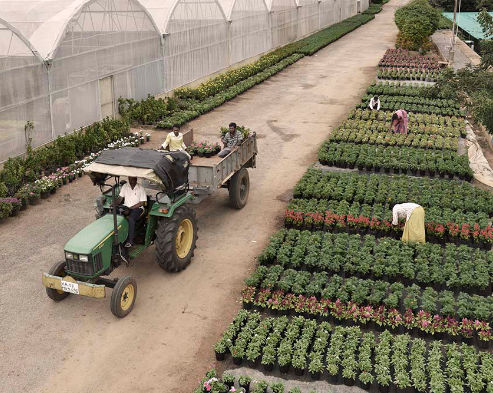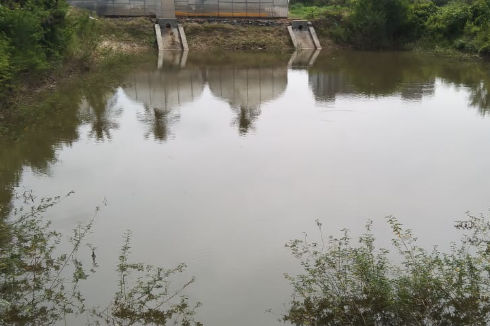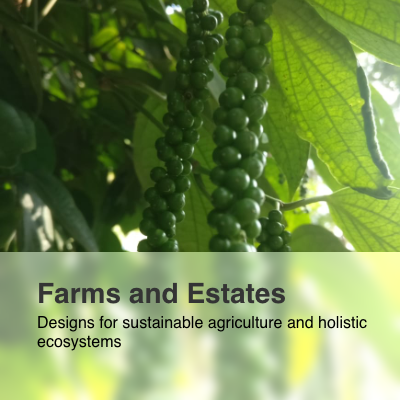Treating Polluted Groundwater using Constructed Wetland Treatment Technology for a large nursery’s irrigation requirement.
One of the largest and trusted sources for high quality plants and seeds in India, address urban groundwater and borewell contamination with a holistic and natural water treatment approach.
Fresh Water Requirement
0 KLD
Area of Nursery Establishment
0 Acres
Hybrid Seeds Researched and Manufactured
0 + Varieties
Ornamental Plants Cultivated and Exported
0 + Varieties
Context
Real Estate expansion in Bangalore City has led to subsurface water contamination and pollution.

Indo-American Hybrid Seeds (India) Pvt. Ltd. founded in 1965, is a pioneering establishment involved in the development and production of high-quality seeds of vegetables and field crops to the Indian Market, as well as the development, supply and export of a wide variety of exotic ornamental plants.
INDAM’s Bangalore facility largely depends on well and underground water for irrigation. The impeccably planned, design and construction of the wealth of open fresh water bodies, borewells and rain-water harvesting catchments within the 27 acre property, had in recent years become contaminated due to the urbanization and expansion of Bangalore City.
INDAM’s Bangalore facility largely depends on well and underground water for irrigation. The impeccably planned, design and construction of the wealth of open fresh water bodies, borewells and rain-water harvesting catchments within the 27 acre property, had in recent years become contaminated due to the urbanization and expansion of Bangalore City.
Approach
Firefly’s Constructed Wetland Treatment System polishes 3 lakh liters of water per day using the least energy to meet not just PCB Standards but also the company's most demanding quality specifications.
The issue with conventional STPs
People have the tendency to go for sophisticated technologies which are compact in size. The operation of such STPs involve direct emissions of greenhouse gases as well as indirect emissions from high energy consumption. The rising cost of fossil fuels and increasing concern about climate change are two major issues with regard to conventional STPs.
Such systems have to be operated and maintained by skilled professionals almost on a daily basis. The complexity of operations often lead to failures, reduced efficiency of the systems and high operational costs.
Firefly’s advanced nature-based approach
INDAM depended on the supply of 3KLD of high quality water daily. This was vital to maintain both plant life and high crop yields.
Firefly’s approach was a Constructed Wetland Treatment System that was energy-independent and naturally resistant to fluctuations in water quality. It made use of aquatic plants to process and treat contaminated water, and required minimal maintenance suitable for non-specialized labourers. A gravity-powered biological water treatment system that utilized plants to sustain the life of other plants, was a solution that was in alignment with the company’s values.
Firefly’s approach was a Constructed Wetland Treatment System that was energy-independent and naturally resistant to fluctuations in water quality. It made use of aquatic plants to process and treat contaminated water, and required minimal maintenance suitable for non-specialized labourers. A gravity-powered biological water treatment system that utilized plants to sustain the life of other plants, was a solution that was in alignment with the company’s values.
Our Solutions
Firefly proposed a customised Constructed Wetland Treatment System that integrated seamlessly into the company’s site conditions, area availability and water quality requirements and reduced costs and carbon footprint.
Systemic Design
Responsible design that addresses the heart of the problem with processes that integrate with the whole ecosystem without unintended side-effects
Tailor-made to Site Conditions
Considering already existing irrigation infrastructure, and building alongside and at the highest point of the property thereby making the system energy efficient
Low Operational Costs
Easy to operate system design that utilizes non-specialized labour, and no electro-mechanical and moving parts that require repair and maintenance
Aiming for Impact
Easily implemented system that drastically reduces carbon footprint and offers intangible benefits to the environment and the people of the facility
Impact
Reduced Carbon Footprint – Less use of fossil energy
Higher Crop Yields – High quality water that positively impacts crop health and disease resistance
Improved Soil Health – Soil receiving good quality water retain structure and fertility
Attracting and Protecting Biodiversity – The system attracts beneficial pollinators that help the facility’s crop yields
Aquatic Plants – A new category of plants, ‘aquatic ornamentals’ added as a business venture




























